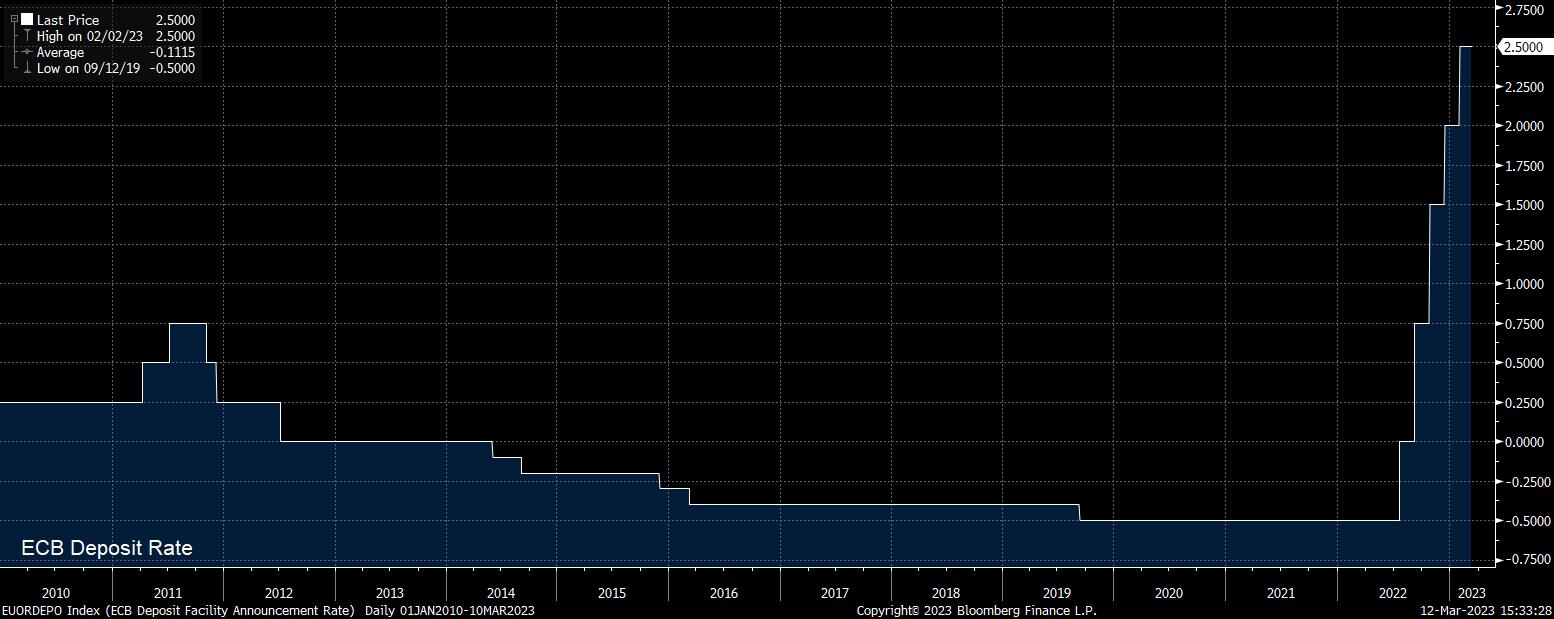- English
Unsurprisingly, given how concrete the ECB’s guidance has been over the last quarter, money markets fully price a 50bps hike at this meeting – a move which would take the deposit rate to 3%. Hence, the rate decision itself is unlikely to be a major market-mover.

Guidance Holds The Key
Instead, it will be the commentary – both explicit, and implicit via the latest economic forecasts – that are most likely to elicit a market reaction. As recent remarks from a plethora of GC members indicate, the remarkably prolonged period of unanimity and agreement among policymakers on the appropriate rate path is at an end. The hawks, led by Isabel Schnabel, have been touting the prospect of continuing to hike at a 50bps clip well into spring. Meanwhile, the doves, led by Chief Economist Philip Lane, would appear to be much more comfortable with downshifting to a 25bps per meeting pace in the second quarter.
Clearly, market participants will look for clarity on this key issue in both the policy statement, and President Lagarde’s post-meeting press conference. It seems likely, however, that the ECB will downshift to a 25bps hike in both May and June, before pausing to assess the impact of cumulative tightening on the eurozone economy. That said, risks to this call are clearly on the hawkish side, given the stubbornly high nature of core inflation within the bloc, and scant signs of a peak emerging.
Explicit guidance, of the ilk seen last December, is, however, unlikely. Instead, as a result of the aforementioned inflation concerns, optionality and flexibility are set to remain the ‘modus operandi’ of the ECB, with the policy statement likely to stress a ‘meeting-by-meeting’ and ‘data-dependent’ approach to policymaking. A likely compromise to pacify both sides of the hawk-dove divide could be a slower pace of hikes, accompanied by a faster pace of quantitative tightening – something that would pressure periphery debt, and widen core-periphery spreads (such as the BTP-Bund below) if it were to come to fruition.

The material provided here has not been prepared in accordance with legal requirements designed to promote the independence of investment research and as such is considered to be a marketing communication. Whilst it is not subject to any prohibition on dealing ahead of the dissemination of investment research we will not seek to take any advantage before providing it to our clients.
Pepperstone doesn’t represent that the material provided here is accurate, current or complete, and therefore shouldn’t be relied upon as such. The information, whether from a third party or not, isn’t to be considered as a recommendation; or an offer to buy or sell; or the solicitation of an offer to buy or sell any security, financial product or instrument; or to participate in any particular trading strategy. It does not take into account readers’ financial situation or investment objectives. We advise any readers of this content to seek their own advice. Without the approval of Pepperstone, reproduction or redistribution of this information isn’t permitted.
